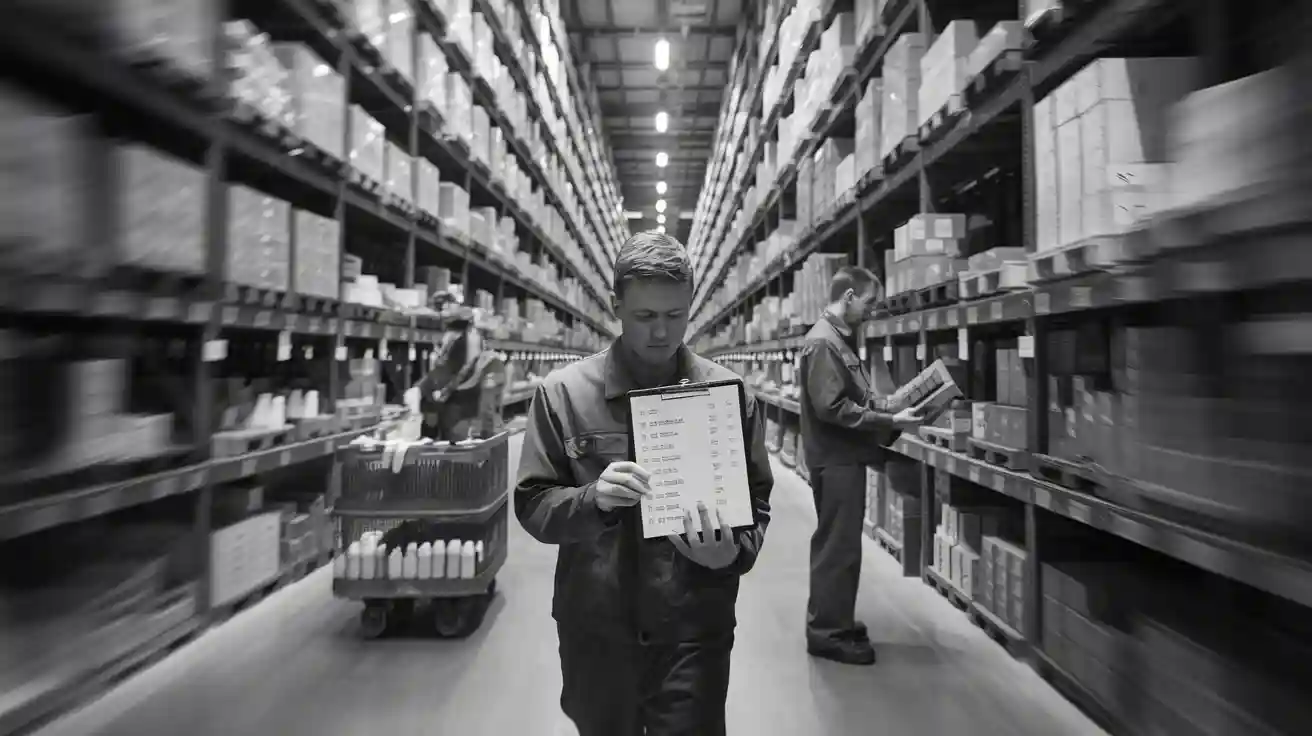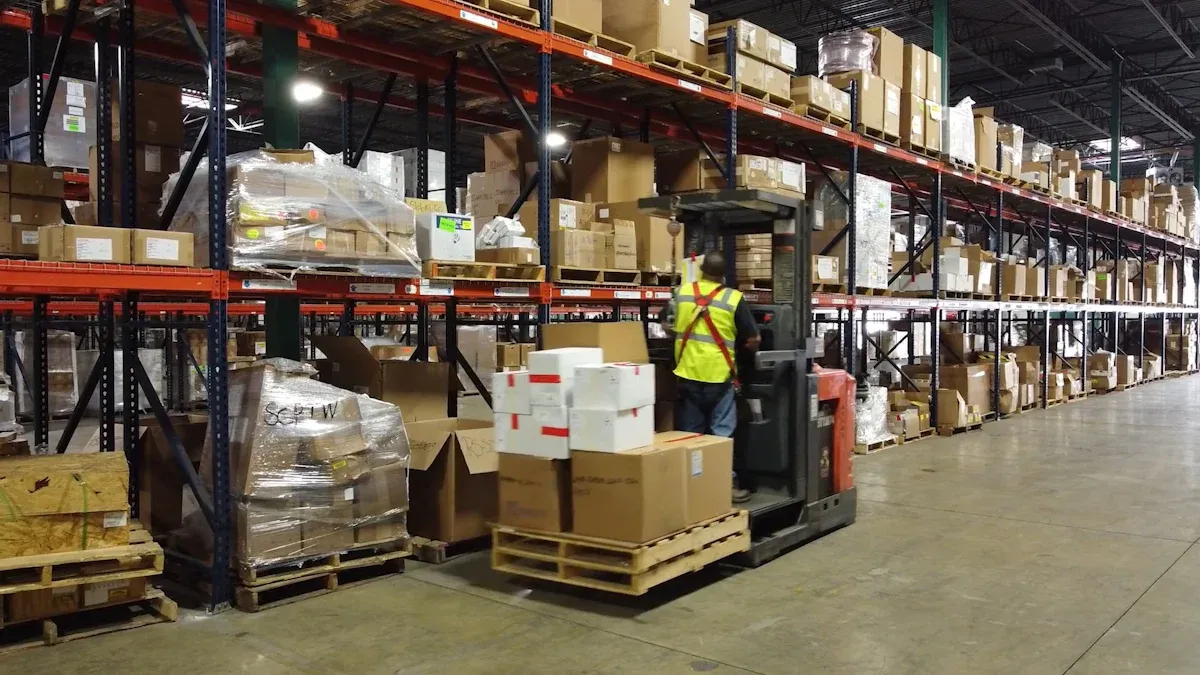How Pick Lists Streamline Warehouse Operations

A pick list helps warehouse operations run smoothly. Workers use a pick list to find the right items and correct amounts. This list acts as a clear guide, so staff members make fewer mistakes. A pick list also saves time because it shows exactly where to find products. Warehouse operations become faster and more accurate when teams use a pick list every day.
Pick List Basics

What Is a Pick List
A pick list is a key document in warehouse operations. Workers use it to find and collect the right products for each order. The pick list acts as an authoritative guide, showing exactly what items to pick, how many, and where to find them. Warehouse management teams rely on picklists to organize workflows and reduce mistakes. This document helps staff process and dispatch orders safely and correctly. Many warehouses now use digital picklists, which connect to warehouse management systems. These systems give real-time updates and help teams work faster. A pick list improves accuracy and supports customer satisfaction by making sure every order is complete and correct.
Note: A picklist is not just a simple list. It is a systematic tool that helps warehouse staff and management communicate clearly and track every order step.
Key Components
A standard picklist includes several important elements. Each part helps warehouse staff work quickly and avoid errors.
- Order Number: This unique number links the picklist to a specific customer order.
- Product Details: The picklist lists product names, SKUs, barcodes, and descriptions. These details help workers pick the right items.
- Warehouse Location: The picklist shows the exact spot for each item, such as zone, rack, shelf, or bin.
- Quantity: It tells staff how many units to pick for each product.
- Item Image (optional): Some picklists include pictures to help workers check items visually.
- Unit Size and Weight (optional): This information helps with packing and equipment planning.
- Date and Time of Order: This helps staff prioritize urgent orders.
- Customer Information (optional): Sometimes included for extra order checks.
A picklist also supports warehouse management by tracking order progress and inventory. Managers can use picklists to monitor stock, assign tasks, and adjust workflows. Picklists help everyone in warehouse operations stay organized and efficient.
Types of Pick Lists
Physical vs Digital
Warehouses use both physical and digital picklists to guide the picking process. Physical picklists are printed on paper. Workers carry these lists as they move through the warehouse. However, physical picklists do not update in real time. This can lead to mistakes, such as picking the same item twice or missing urgent changes. Physical picklists also slow down the picking process because workers must check each item by hand.
Digital picklists connect to Warehouse Management Systems (WMS). These systems update inventory and order details instantly. Digital picklists help workers avoid errors by showing the latest information. They can also display images and suggest the best route for the picking process. Many warehouses use tablets, smartphones, or special picking devices. Features like barcode scanning and voice picking make the picking process faster and more accurate. Digital picklists also help managers track progress and improve the picking process over time.
Tip: Digital picklists save time, reduce paper waste, and make the picking process more reliable.
Picking Methods
Warehouses use different picking methods to match their needs. Each method changes how the picking process works and affects speed and accuracy.
| Picking Method | Definition | Key Features | Best Use Cases |
|---|---|---|---|
| Discrete Picking | Workers pick one order at a time, focusing on one SKU per trip. | Simple, high accuracy, easy to track | Low volume or custom orders |
| Batch Picking | Workers pick items for several orders at once, grouping similar SKUs. | Fewer trips, saves time, needs sorting | Many small items, orders with overlapping SKUs |
| Zone Picking | Warehouse splits into zones; each worker picks items only in their zone. | Specialization, less travel, needs coordination | Large warehouses, diverse inventory |
| Wave Picking | Orders grouped into waves by time or type; workers pick for many orders. | Schedules picking, handles high volume | E-commerce, mixed item sizes, complex order profiles |
The picking process changes with each method. Discrete picking works well for simple orders but can be slow for large volumes. Batch picking reduces travel and speeds up the picking process for similar items. Zone picking lets workers focus on one area, which helps in big warehouses. Wave picking organizes the picking process into timed groups, making it easier to handle busy periods and shipping deadlines. Choosing the right method helps warehouses improve the picking process and meet customer needs.
Pick List Benefits
Accuracy and Error Reduction
A picklist improves accuracy in every fulfillment center. Workers follow clear instructions, which helps them select the right items and correct quantities. Digital picklists often use barcode scanning. This technology checks each item and reduces mistakes from manual data entry. Mobile scanning devices also update inventory in real time, so workers always see the latest information.
- Mobile scanning devices integrated with picklists reduce manual data entry errors and provide real-time inventory updates, improving picking accuracy.
- Picklists guide workers efficiently through the warehouse, reducing picking time and minimizing errors.
- Warehouse Management Systems that include scanning and confirmation steps minimize picking errors by ensuring operators scan expected pick locations, SKUs, and destination pallets.
- Optimized warehouse layouts and zoning strategies complement picklists by reducing travel time and congestion, further reducing picking errors.
Picklists help prevent common mistakes in the picking process. Workers avoid picking the wrong items or incorrect quantities. Unique coding systems and barcode scanners help workers tell apart items with similar IDs. Clear labeling and logical storage also support accurate picking.
- Picking wrong items or incorrect quantities, mitigated by barcode scanning.
- Confusion caused by items with similar IDs, reduced by unique coding systems.
- Difficulty finding correct items due to poor inventory management.
- Wrong item substitutions, avoidable with controlled substitution policies.
Picklists integrated with warehouse management systems guide pickers to the correct items and quantities. They confirm picks with barcode scanning or pick-to-light systems. This process ensures that workers place picked products in the correct order-specific locations. When workers use picklists, they make fewer mistakes, which leads to higher customer satisfaction.
Note: Case studies show that picklists work best when workers receive proper training and items have clear labels. Technology alone cannot prevent all errors, but picklists are a key part of reducing mistakes in order fulfillment.
Speed and Efficiency
Picklists help every fulfillment center achieve efficient order fulfillment. Workers save time because picklists show exactly where to find each item. Digital picklists optimize picking routes, so workers walk less and pick faster. This organization reduces unnecessary steps and speeds up the picking process.
- Picking lists reduce picking errors by ensuring the right products and quantities are selected, which decreases returns and customer complaints.
- They enhance warehouse efficiency by streamlining worker movement and reducing unnecessary steps.
- Picking lists improve order accuracy, leading to higher customer satisfaction.
- They save time and labor costs by optimizing the picking process, allowing more orders to be completed faster.
- Different picking list types (single order, batch, zone, wave) optimize picking based on order volume and warehouse layout, reducing travel time and congestion.
- Essential elements like order number, SKU, quantity, and warehouse location guide pickers precisely, minimizing delays.
A fulfillment center that uses digital picklists can process more orders each day. Workers finish tasks quickly and accurately. This speed means customers get their orders on time, which increases customer satisfaction. Picklists also help managers assign tasks and track progress, making the whole warehouse more efficient.
Tip: Digital picklists connected to warehouse management systems automate the picking process. This automation helps workers avoid delays from stockouts or backorders.
Inventory Control
Picklists play a big role in inventory control at every fulfillment center. Each picklist provides a clear, structured list of items to be picked, including quantities, SKUs, and locations. Digital picklists update inventory records in real time, so managers always know what is in stock.
- Picklists provide a clear, structured list of items to be picked, including quantities, SKUs, and locations, which reduces human errors during picking.
- Digital picklists integrated with warehouse management systems allow real-time tracking and updating of inventory, minimizing mistakes.
- The use of barcodes and barcode scanners ensures correct item identification and scanning, preventing errors and ensuring accurate inventory updates.
- Picklists guide pickers through efficient routes and verify order completeness before marking orders as fulfilled, optimizing the picking process.
- This systematic approach minimizes discrepancies between physical stock and recorded inventory, maintaining accurate inventory records.
When a fulfillment center uses picklists, inventory records stay accurate. Managers can spot low stock levels and reorder items before they run out. This accuracy supports efficient order fulfillment and keeps customers happy. Picklists also help track which items move fastest, so managers can plan better and avoid overstock or shortages.
Callout: Accurate inventory control leads to fewer mistakes, faster order fulfillment, and higher customer satisfaction. Picklists make this possible by connecting every step of the picking process to real-time inventory updates.
Picklist Optimization

Technology and Automation
Modern picklist management relies on advanced technology to boost accuracy and speed. Warehouse management systems (WMS) automate picklist creation and update them in real time. These systems use picking algorithms to set the best picking order, which reduces travel time and increases productivity. Staff can access digital picklists on mobile devices or tablets, receiving instant updates and guidance. Barcode and RFID scanning confirm each pick, helping staff avoid mistakes. Automated storage and retrieval systems, such as OPEX’s Perfect Pick, increase picking speed and accuracy. Companies like Newegg have cut order cycle times to just 20 minutes using these solutions. Automation also improves inventory tracking, which supports customer satisfaction by ensuring orders are correct and delivered quickly.
Tip: Digital picklists connected to WMS provide real-time inventory data, preventing errors and keeping stock levels accurate.
Organization and Sequencing
Organizing and sequencing items on a picklist is one of the best practices for pick list management. Optimized pick lists group items by location, which reduces unnecessary walking. Strategies like batch picking, zone picking, and wave picking help staff pick multiple orders at once or focus on specific zones. Placing fast-moving items near the fulfillment area and grouping items often sold together can further cut travel time. Sequencing picks to follow a clear path prevents crisscrossing and repeated visits to the same spot. These methods help warehouses save labor costs and improve order fulfillment speed. Measuring picker steps before and after changes shows real gains in productivity and motivates teams to keep improving.
Staff Training
Ongoing staff training is vital for effective picklist management. Training programs should include process manuals, e-learning modules, and hands-on practice with digital tools. Certifying staff on WMS navigation and voice picking systems ensures everyone can use the latest technology. Gamification, such as leaderboards and bonus schemes, motivates staff to follow best practices for pick list management. Regular audits and feedback sessions help identify errors and target training where needed. Ergonomics and safety training also reduce fatigue and mistakes. Well-trained staff read and follow picklists accurately, which leads to faster order fulfillment and higher customer satisfaction. A culture that values accuracy and continuous improvement supports optimized pick lists and keeps performance high.
Pick lists help warehouses achieve faster and more accurate order fulfillment. Case studies show that automation, real-time tracking, and staff training lead to fewer errors and higher productivity. Companies measure success by tracking picking accuracy, pick rates, and cost per item. By reviewing and improving pick list processes, teams can reduce mistakes, save money, and deliver better service to customers.
Regularly updating picking methods and technology keeps warehouse operations efficient and ready for future growth.
FAQ
What is the main purpose of a pick list?
A pick list helps warehouse workers find and collect the right items for each order. It shows product names, quantities, and locations. This tool reduces mistakes and speeds up the picking process.
How does a digital pick list improve warehouse operations?
Digital pick lists update in real time. Workers see the latest order and inventory information on mobile devices. This system reduces errors, saves time, and helps managers track progress easily.
Can pick lists help with inventory control?
Yes. Pick lists track which items leave the warehouse. Digital systems update inventory counts instantly. Managers can spot low stock and reorder quickly, which keeps inventory accurate.
What happens if a worker picks the wrong item?
If a worker picks the wrong item, barcode scanning or double-checking with the pick list can catch the mistake. Most warehouses use these checks to prevent shipping errors and keep customers happy.
Are pick lists useful for small warehouses?
Pick lists help both small and large warehouses. Small teams use them to stay organized and avoid mistakes. Even with fewer orders, a pick list keeps the picking process clear and efficient.
See Also
Essential Strategies For Smooth And Accurate Inventory Movement
How Lean Logistics Enhances Sustainable Supply Chain Practices
Cutting-Edge Intralogistics Trends Driving Warehouse Evolution